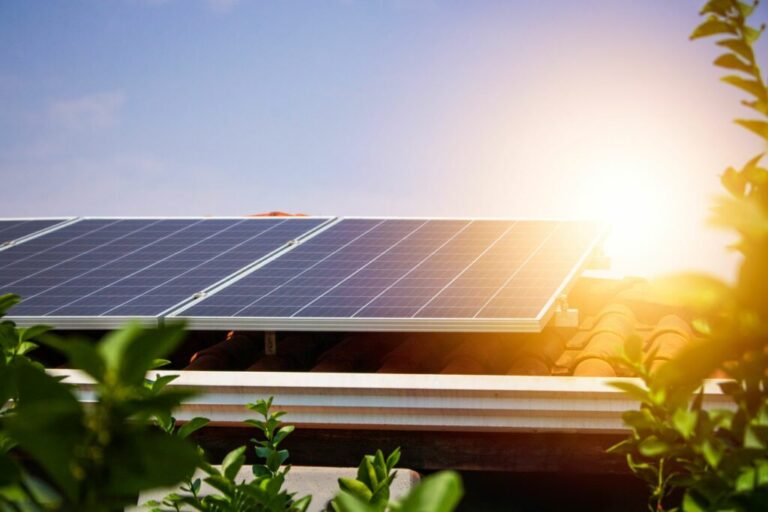There are about six million electric geysers in SA heating water, whether needed or not – and that’s reckoned to be responsible for at least two stages of load shedding.
Billions of rands have been poured into residential solar power systems in the last two years, primarily to keep lights and other essentials on during load shedding. Still, most of these are wired to specifically exclude the biggest consumer of electricity in most households: electric geysers.
Water heating accounts for roughly 40% of the average household’s monthly electricity spending.
The traditional solution to this problem was installing hot water geysers on roofs with flat plate collectors or evacuation tubes. As many people discovered, this solution had shortcomings, such as expensive plumbing work, maintenance, and heat loss during winter.
A more efficient solution is to convert your existing electric geyser to draw power from solar panels.
“The advantage of this approach is that you don’t require expensive plumbing work, and you get to benefit from the long lifespan of normal solar panels, which typically last as long as 25 to 30 years,” says Marc du Plessis, executive head of LookSee, Standard Bank’s home efficiency platform. LookSee launched its Solar Loan scheme in 2023 to make solar power systems affordable for South Africans.
“What’s more,” says Du Plessis, “the conversion allows the geyser to maintain a connection to the home’s main electricity for backup power during extended periods of cloudy weather.”
This requires installing three or four dedicated solar panels depending on the size of the geyser (three for a smaller household and four to provide hot water for four to five people).
Costs
The cost of a three-panel electric geyser conversion, including installation, is R25 440, according to LookSee. A larger four-panel conversion comes in at under R30 000.
“The good news is the payback period for these installations is typically three to five years,” says Du Plessis.
“Once the installation is done, you start to see savings from the very first day.”
These systems can be financed through LookSee’s Solar Loan scheme where interest rates are capped at a maximum of prime plus 2.5%. This is a substantial discount on the prime plus 7% offered on personal loans, or the maximum prime plus 17.5% mandated by the National Credit Act.
Loan sizes through LookSee’s Solar Loan scheme vary from R3 000 to more than R300 000.
Savings on a large geyser with four solar panels
The following table from LookSee gives an indication of the savings that might be expected on a four-panel electric geyser conversion, feeding a household of four people. This system would supply up to 95% of the household’s hot water needs.
| Estimated savings | |
| Estimated monthly savings on the electricity bill: | R733 |
| Estimated monthly repayment on a Solar Loan: | R659 |
| Estimated savings over 10 years if paying cash: | R98 000 (includes expected electricity tariff hikes) |
| Estimated savings over 10 years if financed via a Solar Loan: | R93 000 (includes expected electricity tariff hikes). |
These cost savings are based on certain assumptions, such as a geyser temperature set to 70⁰C and each family member taking one shower daily using 70 litres of water per shower.
The conversion to solar power uses direct current rather than the normal household alternating current, which helps reduce the cost of installation.
For those with existing solar power systems wired to an inverter, converting an electric geyser to solar has a different installation process. These solar electric geysers are not connected to the inverter but rely on an entirely different power source from dedicated solar panels.
The conversion process
The conversion and installation of solar panels usually takes a few hours and comprises four steps: first, the installation of rooftop solar panels.
These are then connected to a controller unit situated close to the existing geyser. An additional connection is then made from the home’s main electrical supply to the controller unit.
The controller unit is then connected to the geyser element and thermostat, which controls the temperature of the water. The last step involves installing an end-user device connected to the controller for the household occupants to monitor and control the geyser.
For more information, click here.
Falling equipment prices
More good news for SA consumers contemplating installing a solar system is that prices of solar panels have fallen in the past two years, making it affordable for many mid-market residences.
“It’s important to get high-quality equipment and use reputable installers, and that is where we have focused our attention,” says Du Plessis.
“We are not prescriptive in the equipment that we finance, but we do insist on reputable brands and installers that we trust in case there is a need for repair and maintenance after installation. There are a lot of fly-by-night installers in the market, and we have taken care to be highly selective in partnering with the best.”
Brought to you by LookSee.
Moneyweb does not endorse any product or service being advertised in sponsored articles on our platform.

